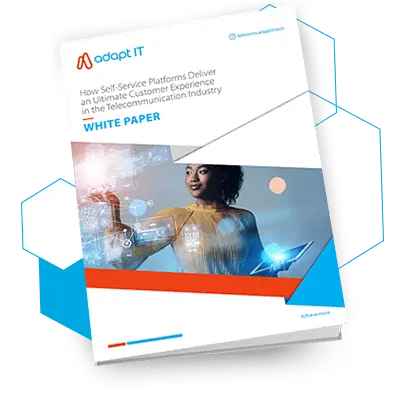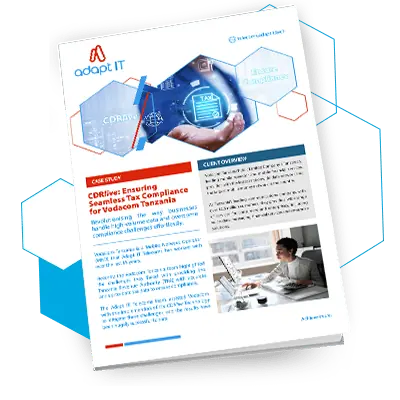Many would consider M-Pesa to be a mobile money success story and a catalyst for financial inclusion across Kenya and many countries in Africa. This mobile money solution has offered a way for many unbanked customers across Africa to participate in the economy. With innovative FinTech being developed, there is an opportunity to look beyond M-Pesa and create new revolutionized services that talk to customers’ needs and wants. This could take on many different forms and include new payment gateways, rewards programs, and solutions that offer scalability, enhanced access, and financial inclusion.
Table of Contents
ToggleThe impact of M-Pesa
M-Pesa, which is one of the largest mobile money services in Africa, has been a critical case study within the FinTech sector. This is a mobile phone-based money transfer, payment, and micro-financing service that was launched by Safaricom in 2007. Since its inception, this service has been referred to as the most successful implementation of a Mobile Money solution. In just over a year, M-Pesa had 2.7 million mobile money users. Over the last 13 years, M-Pesa has seen a steady increase in customers and has reached 41.5 billion transactions in the financial year ending 31 March 2020.
Why has M-Pesa been so successful in the African market? The answer is that these services opened up a world of opportunity for the many unbanked customers across the African continent and provided access to financial services. This offered financial inclusion and turned a customer’s mobile phone into a powerful financial tool that could be used to make payments and transfer funds all while using simple SMS technology, that is highly accessible. M-Pesa reduced the need for banks and ATMs by providing millions with a gateway to financial services through a simple mechanism using their mobile phones.
Looking beyond M-Pesa and the opportunities that lie ahead
There is no doubt that M-Pesa changed the way that many view mobile money and that its application has had a significant impact on connecting the unbanked population to financial services. But there is a growing need to look towards the future and step away from fiat currency. This is already happening globally with the creation of new virtual currencies, case in point, Bitcoin and cryptocurrency. But access and connectivity in Africa is different from the rest of the world and therefore requires a different view of FinTech solutions, especially where the unbanked are concerned.
According to the World Bank Organisation, there is an unbanked population estimated at 350 million, across Sub-Saharan Africa, which accounts for 17 percent of the global total. Although these customers are unbanked, many have access to a mobile phone, which opens up an opportunity to innovate service offerings beyond just mobile money. How much of an opportunity does this provide? Well, there are an estimated 477 million people in Sub-Saharan Africa that are subscribed to a mobile service, this accounts for a staggering 45% of the population which is a large audience of potential customers. Mobile services are also set to continue to increase in this market with an estimated half a billion mobile subscribers in 2021 and 1 billion mobile connections expected by 2024. This is said to account for 50% subscriber penetration by 2025.
Where has this growth come from? Many have said that this increase can be attributed to the rise of smartphone adoption and the availability of affordable devices that allow low-income consumers to gain access to these services. With more access to smartphones, GSMA also expects the number of smartphone connections in Sub-Saharan Africa to almost double and reach 678 million by the end of 2025. This is an adoption rate of 65% and indicates significant growth potential for this sector.
With more and more customers being connected and using their mobile phones to transact, there is an opportunity to create new innovative solutions that offer even more financial inclusion and move beyond physical hard money. We examine these options below.
New Alternative Currencies – rewards, new payment gateways, and enhanced scalability
Businesses and Telcos are in a unique position to enhance financial inclusion through the development of new alternative currencies. What M-Pesa demonstrated is that banks are not needed to facilitate payments, and by using FinTech solutions, customers could make payments and transfers with their mobile phones. But an opportunity exists to push the envelope and use this model to recreate new alternative currencies that can be earned and gained through different rewards and loyalty programs. In this case, customers would earn points to gain rewards, these points would then form the new currency. This kind of reward program offers scalability, as it would allow different businesses to come together, offer services, rewards, etc. all using this new currency.
A great example of an effective way in which this has been done in a South African context is through Discovery’s Vitality program. Customers are encouraged to participate in certain activities and ultimately live a particular lifestyle to meet specific goals, and in return, they earn points. The Vitality Points earned can then be redeemed and used, as a currency, for certain activities, products, or services. Discovery has scaled this program by partnering with different businesses that include gyms, restaurants, petrol stations, medical professionals, etc. These business partnerships not only make the programme more attractive but offer the customers more.
This type of program infrastructure can be implemented by Telcos, where for example customers could earn points for staying connected to their network for a certain period of time, not swapping out their sim cards, purchasing airtime or data, etc. The points being earned would then be converted into a virtual currency that can be used for the purchasing of several different products and services – adding value to the customer experience and incentivising them to buy more. These loyalty and reward programs are also not limited to just the provider customer relationship, they can be extended to the provider to merchant and merchant to customer structures
This type of FinTech solution moves the infrastructure away from the banking structure, which means that the services are not confined by banking gateways and legislations, therefore allowing more customers to gain access to the services. For example, minors under the age of 18, in South Africa would generally not be granted access to a bank account because of banking regulations relating to age. The rewards programme structure is a great way around this as it is not linked to banking legislation and would allow minors to use these financial services, add to the economy, and reap the rewards.
By creating these offerings and moving financial services away from the banking structure, you can activate and include a large portion of the market that is not being catered for, such as the estimated 350 million unbanked customers. This not only enhances financial inclusion but allows you to broaden the audience and customer base, which in turn attracts investors.
Conclusion
M-Pesa was and is a fantastic example of how successful mobile money solutions can be in this market. But there is a need to continue to expand and innovate the FinTech solutions on offer to tap into the large portion of the population that remains unbanked. One of the ways in which to do this includes the creation of new alternative currencies through the development of reward and loyalty programmes where customers can earn points and use them as a currency for products and services. This offering expands the reach of financial services and is not restricted by banking structures, gateways, and legislation. By looking at innovative ways of creating new currencies that move beyond fiat money, we can offer even more financial inclusion to a broader audience. This is definitely a space worth watching.
Explore the Power of CDR

Steven Sutherland experienced Adapt IT Divisional Executive, dynamic business leader for their Telecoms Division with a demonstrated 25-year history in the telecommunications and IoT sectors. Strong global marketing, sales, and business development professional with 15 plus years focused experience in the Southern and Rest-of-Africa markets and a unique blend of entrepreneurial spirit combined with a passion for both technology and business.
At Adapt IT Steven is responsible for building and growing the Telecoms Division on top of its industry-proven software competencies including but not limited to Customer Experience and Self Service, NextGen VAS, IoT, FINTECH, and Advanced Analytics. Steven is always looking forward to an opportunity to demonstrate the value that his 20 plus years of experience in these disciplines can bring to your business







